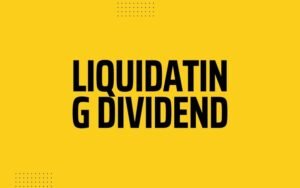What Does Life Income Fund Mean?
One registered retirement income fund (RRIF) available in Canada is the life income fund (LIF), which can be used to keep assets other than retirement income, including locked-in pension funds, for future release as retirement income. It is not possible to withdraw a life income fund in full. The fund’s owners must use it in a way that will sustain their lifetime retirement income. The Income Tax Act covers LIFs and establishes the minimum and maximum withdrawal amounts for RRIFs annually.
The Income Tax Act’s RRIF provisions consider fund balances and an annuity factor.
Knowledge of Life Income Fund
Financial firms in Canada offer life income funds. They give people an investment vehicle through which to manage pension fund disbursements and other assets that are locked in. A government formula for all types of RRIFs determines life income fund payouts. Most provinces in Canada require that life income fund assets be invested in a life annuity. In many provinces, LIF withdrawals can begin at any age if the income is used for retirement.
Once an investor begins taking LIF payouts, they must monitor the minimum and maximum amounts that can be withdrawn. These amounts are disclosed in the annual Income Tax Act, which provides stipulations about all RRIFs. The maximum RRIF/LIF withdrawal is the larger of two formulas, defined as a percentage of the total investments.
The financial institution from which the LIF is issued must provide an annual statement to the LIF owner.
Based on the annual statement, the LIF owner must specify the income they want to withdraw at the beginning of each fiscal year. This must be within a defined range to ensure the account holds enough funds to provide lifetime income for the LIF owner.
Rules for Life Income Funds (LIFs)
The following are some general guidelines for a LIF:
- The minimum withdrawal requirements of RRIF apply to life income funds.
- Withdrawals are taxed at your marginal tax rate since they are considered income.
- Your spouse’s age cannot be used to calculate the minimum LIF payments.
- To purchase an LIF, you must be at least the early retirement age (as defined by the pension statute).
- To start receiving LIF payments, you must be at least the usual or early retirement age.
- Payments have to start the year after your 71st birthday.
- Before creating an LIF, you must have your spouse’s approval because withdrawals may affect your future death benefits.
- In a LIF, only specific kinds of investments are eligible.
Benefits and Drawbacks of a Life Insurance Fund (LIF)
Establishing a LIF gives the following benefits:
- Within a LIF, donations grow tax-deferred, just like other registered products.
- Owners of LIFs are free to select their investments, provided that they meet specific criteria.
- Money in an LIF is shielded from creditors and cannot be taken out to satisfy debt commitments.
- Contributions are tax-deferred until the year following your 71st birthday.
- Of course, there are drawbacks to creating a LIF as well. They consist of:
- an early retirement age (EAR) threshold that must be met before beginning a LIF
- a minimum age threshold (early retirement or average retirement age) that must be met to qualify for LIF benefits
- Limits on maximum withdrawals keep you from getting additional money when needed.
- A LIF account can only hold eligible investments.
Benefits of a Life Insurance Fund
- Contributions to a LIF account grow tax-deferred.
- Owners of LIFs are free to select their investments, provided that they meet specific criteria. Money in an LIF is shielded from creditors and cannot be taken out to satisfy debt commitments.
- Contributions are tax-deferred until the year following your 71st birthday.
The drawbacks of a life insurance fund
- include an early retirement age (EAR) threshold that must be met before beginning an LIF, a minimum age threshold (early retirement or average retirement age) that must be met to qualify for LIF benefits
- Limits on maximum withdrawals keep you from getting additional money when needed. A LIF account can only hold eligible investments.
Life Income Fund Administration
Many Canadian institutions provide life income products to help investors with their retirement payments. The companies that offer life income funds are listed below, along with some information about their products.
Sun Life Financial offers customers several options for long-term fund investment, such as segregated fund contracts, mutual funds, insurance-guaranteed investment contracts, and more.
Conversion of assets from a locked-in retirement account, locked-in registered retirement savings plan, or Canada Life permits registered pension plan. It makes it easier to withdraw payments for retirement income.
Canadian Imperial Bank of Commerce: This financial institution provides a savings account with daily interest, yielding a LIF. Aids in the distribution of retirement benefits. Allows investors to receive daily interest on their account balances
FAQs for Life Income Funds
What Age Does a LIF Allow Money Withdrawal?
You can start taking out cash at age 55. Before the age of 55, withdrawals from a LIF are not allowed.
Do taxes apply to LIF income?
Sure. The taxable LIF income must increase your yearly income. Taxes are deducted from withdrawals that exceed the annual minimum withdrawal amount.
What Takes Place in a Life After Death?
The remainder of your life insurance is given to your spouse upon death. It is paid to your heirs if your spouse refuses to accept it or they are absent.
Conclusion
- In Canada, life income funds are a retirement income vehicle.
- The Canadian government regulates numerous aspects of life income funds, most notably the amounts that can be withdrawn, established annually by the Income Tax Act’s RRIF provisions.
- To purchase an LIF, you must be at least of early retirement age (given in the pension legislation), at least of early retirement age or expected retirement date, and begin receiving payments in the year following you reach 71.
- Contributions within an LIF grow tax-deferred, owners can choose their investments (as long as the investments qualify), and monies within an LIF are creditor-protected.
- Many Canadian financial institutions provide life income funds.


































